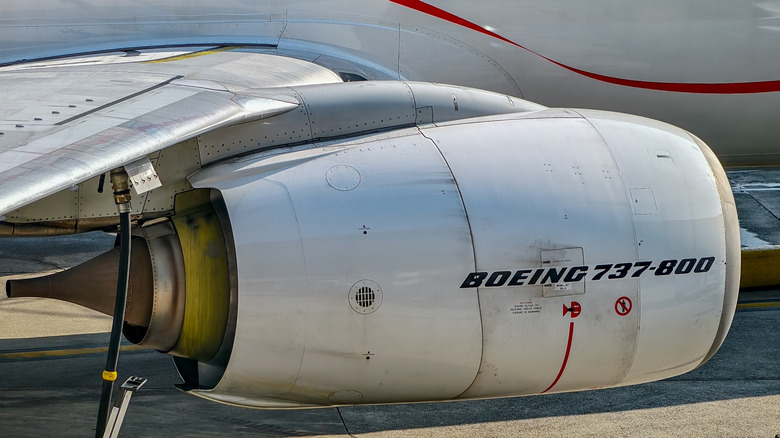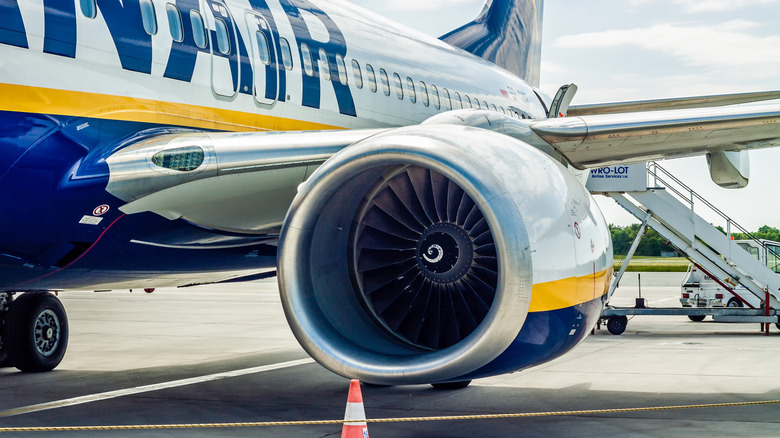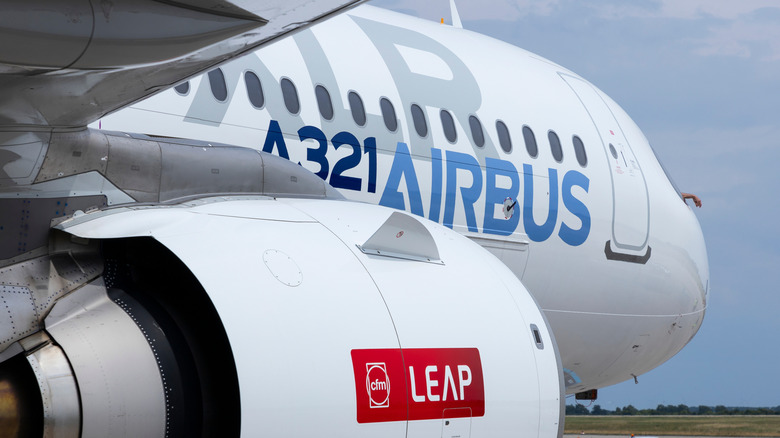This Engine Has Powered More Planes Than Any Other In History
There are certain engines that become more than just a powerplant. In motoring terms, the iconic engines that powered the muscle car era spring to mind. However, aviation also has its share of engines that have become legends. The Rolls-Royce Merlin is an example of one such engine. This iconic engine played a major role in winning the air war during World War II. Another on the list is the CFM56 engine. While it may not have the recognition or the war record of the Merlin engine, it is the best-selling engine in commercial aviation history.
The CFM56 engine entered service in 1982. Since then, there have been more than 34,000 engines built, and these have accumulated over 1.3 billion flight hours. While most famously the engine was used to power narrow-bodied airliners like the Boeing 737 and Airbus A320, it also powered the four-engined Airbus A340. It isn't only associated with civilian aircraft; the engine has also powered some military aircraft.
The military roll of honor includes tankers like the KC-135 and C-135FR, AWACS aircraft (E-3 & E-6), and the P-8A Poseidon maritime patrol plane. But its most famous role is undoubtedly with narrow-bodied aircraft. Indeed, if you flew any Boeing 737 from the eighties up to the Next-Generation family, or the Airbus A320 up to the New Engine Option (NEO), then the CFM56 very likely powered your flight.
CFM - A marriage made for the heavens
The company behind the CFM56 is CFM International, a partnership between America's GE Aviation and Safran Aircraft Engines of France. The 50/50 partnership between the companies was established in 1974, and an agreement signed in 2008 extends the partnership up until 2040. Under the terms of the agreement, the two companies shared the responsibilities of the design, development, and production of the CFM56 engine. The success of the venture and the CFM56 engine is a definite case of two heads being better than one.
The first CFM56 — the CFM56-2 (an engine that still powers the KC-135 tanker) – entered operational service in 1982. Since then, the engine has been significantly developed with several updates introduced over the years. Key among these are the CFM56-3, which was designed for the 737, the CFM56-5B for the Airbus A320, and the most powerful variant — the CFM56-5C — was developed for the Airbus A340.
The CFM56-5B Airbus variant and the CFM56-7B engine developed exclusively for the Boeing Next-Generation 737 are the last production models of the engine. However, while this might be the end of the narrow-story for the CFM56, it isn't the end of the line for CFM's involvement with Boeing's and Airbus' narrow-body programs. Indeed, in terms of commercial aviation, you could say that the Boeing/Airbus/CFM triumvirate has taken a great LEAP forward.
The next LEAP forward
The success of the CFM56 can be attributed to several factors. However, for the airlines, two of the main factors are efficiency and reliability. The CFM56 delivered on both of these. In terms of reliability, the CFM56 proved itself with a 99.96 percent engine dispatch reliability rate. In other words, airlines could expect the engine to cause a delay or cancellation about once in 2,500 flights. When looking at the efficiency of the engine, the picture isn't quite as straightforward. Specifically, a new generation of more efficient engines became available. This included a range of Leading-Edge Aviation Propulsion (LEAP) engines developed by CFM, which offered fuel savings of 15% to 20% over the CFM56. For airlines, this was a big incentive, and one that made both Boeing and Airbus sit up and take notice.
The first of commercial aviation's big two to blink was Airbus. The company updated its narrow-bodied aircraft to incorporate the new generation of engines. The result was the Airbus A320neo (the "neo" suffix stands for New Engine Option). Type certification for the Airbus A320neo with the LEAP-1A engine was granted in 2016. However, with Boeing, the move away from the CFM56 wasn't so straightforward, with the initially ill-fated 737 Max program. The first 737 Max was delivered on May 16, 2017. For Boeing, this was the start of an incredibly difficult period. For the CFM56, it represented the end of a narrow-body era that made it the most successful commercial jet engine of all time.


